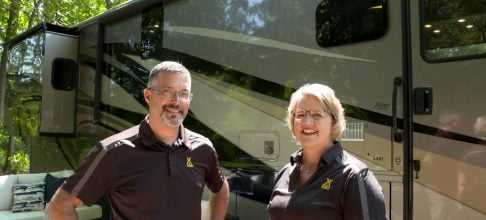It’s time, at last, to lose the generation we belong to as our favorite shorthand for critiquing people older and younger than us. (In case you’ve missed the last, oh, sixty years: Gen Z has quiet-quit the jobs they just startedmillennials blew their mortgages on avocado toastboomers have no idea how to work their techand if we skipped over Gen X, well, that seems about right.)
For their part, institutions are coming to realize that generations aren’t a good measure for identity or ability. This spring, the Pew Research Center named the problems with our generational obsession, announcing it would no longer report on generations the way it has before. It’s hardly the first to do so. “Generational research has become a crowded arena,” the center wrote. “The field has been flooded with content that’s often sold as research but is more like clickbait or marketing mythology.”
In his new book The PerennialsMauro Guillén, sociologist, political economist, and vice dean of the University of Pennsylvania’s Wharton School, argues that we’re well-past ready for a post-generational society.
For the last 150 years, Guillén says, we’ve organized our lives in a rigid set of stages: learn, work, retire, with each generation following the last. But now that humans live longer, healthier lives, alongside fast-moving technology, we’re ready for a more dynamic understanding of how we live and learn—one that’s not defined by age. “We’re in a more fluid situation,” he tells Quartz. And there’s plenty we gain in our working lives, he adds, when we stop dividing ourselves into generations and stages.
We find surprising new kinds of creativity
We tend to associate creativity with the young—say, children’s imaginative storytelling, or young adults’ penchant for risk-taking. But when a team of Ohio State University researchers set out to study winners of the Nobel Prize in economicsthey found a surprising counter to that—in our working lives, our creativity peaks in our mid-twenties, and again in our mid-fifties.
That’s because, they theorized, creativity has two life cycles: one that’s conceptual, which challenges conventional wisdom, and one that’s experimental, which riffs on accumulated knowledge. Those who think conceptually tend to be most creative in those earlier years, while those who are experimental hit their peaks later.
When we work on a team that integrates people of different ages, we access the best of both approaches. At automaker BMW, for example, teams are deliberately built to mix people of different age groups—and those teams, they found, both solved problems faster and made fewer mistakes. “They’ve really been ahead of the game here [in] anticipating these demographic trends and thinking, Why do we write off work at the age of 50?,” Guillén says. “What we should be doing is integrating, not replacing, [seasoned employees] with younger folk.”
We get mentorship from more directions
“Mentoring used to be older [or] more experienced employees mentoring younger ones,” Guillén says. But workplaces that value bringing people of different ages together are experimenting more with reverse mentoring, where less-tenured employees advise more established ones.
It’s not an entirely new concept: In 1999, Jack Welch, former General Electric CEO (and onetime “manager of the century”) had executives pair up with junior staffers to learn about the internet. But today, managers are adopting the practice. Research backs its value, too. Academics from New York University and Harvard Business School have found that mentorship that moves upward—from younger teammates to older ones, or inexperienced people to more experienced ones—can yield advice that’s just as good as the traditional kind.
“When you become an expert at something, you kind of forget what it’s like to not be an expert. You get so ingrained in your world that you ironically narrow your perspective a little bit. Whereas when you’re just starting out, the questions you ask are more broad,” researcher Michael North told Charter about the study. “Rediscovering your own past naivete is actually really valuable.”
We embrace having more than one career
When we stop defining what we can and can’t do by our age, Guillén adds, we see more possibilities for reinvention. We’re not just switching jobs; we’re switching careers entirely.
The Pew Research Center, for example, suggests that those entering the workforce today will find themselves in four to five different occupations—not just jobs—over their lifetime. When fast-flying tech like automation and AI changes the work we do, we might decide it’s time to go back to school, pick up a new skill, or switch into something else. “In the near future,” Guillén says, “it’s going to become the norm.”













